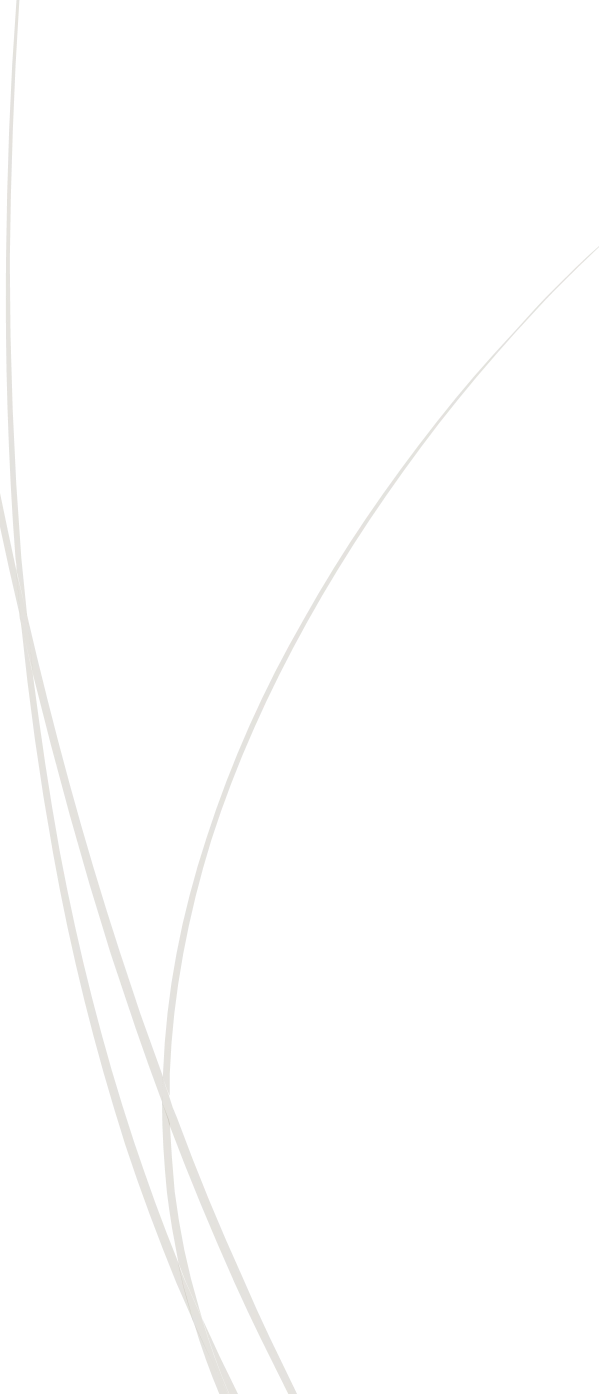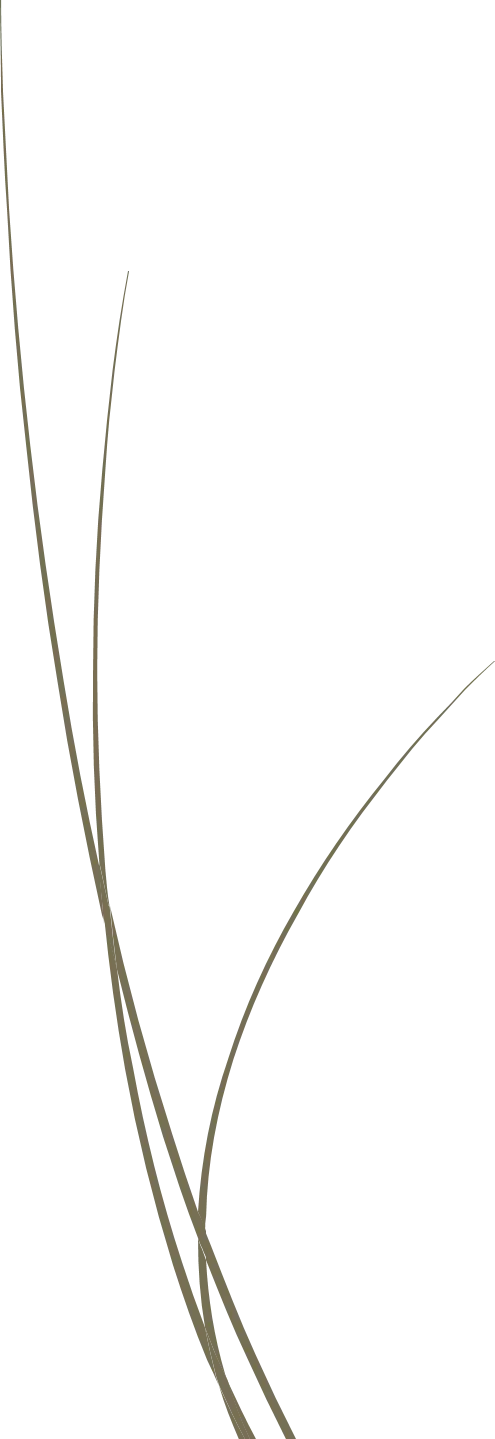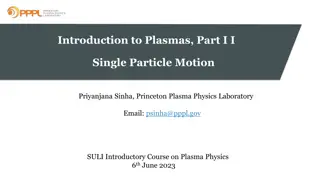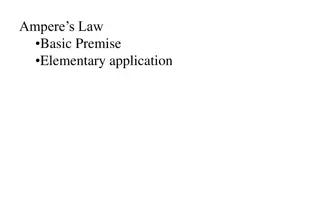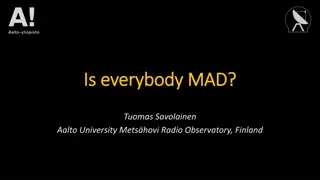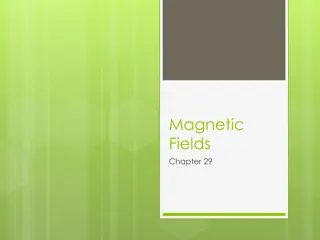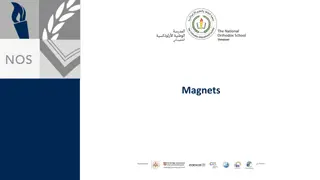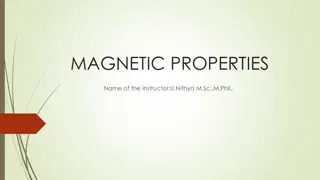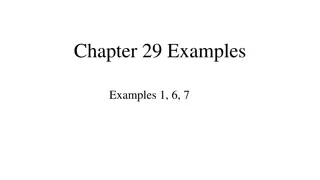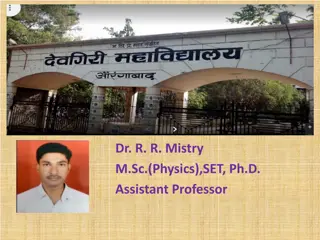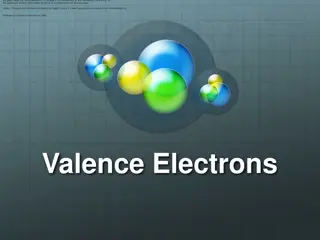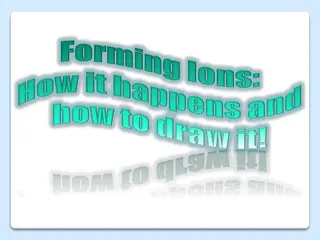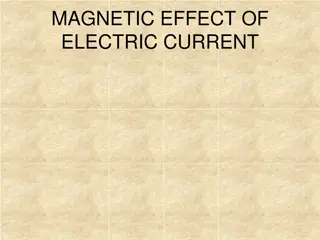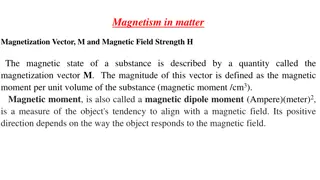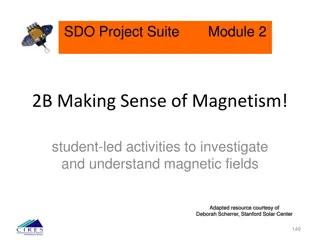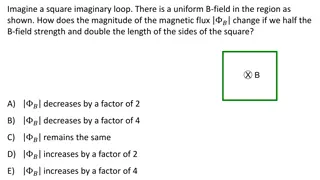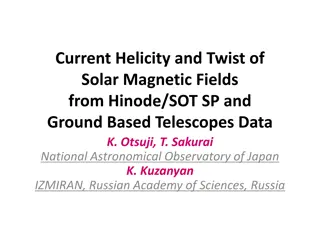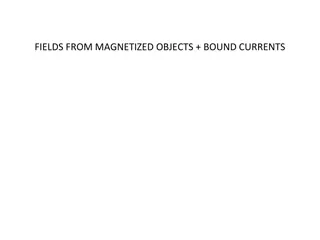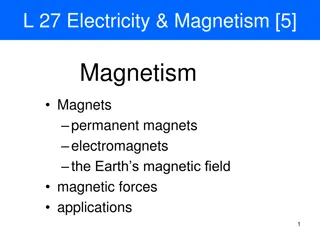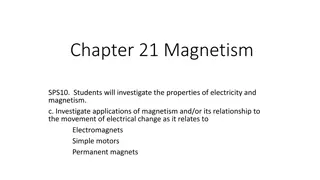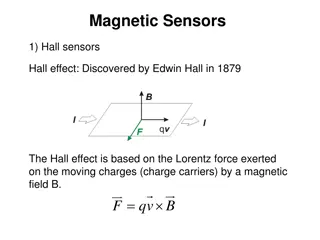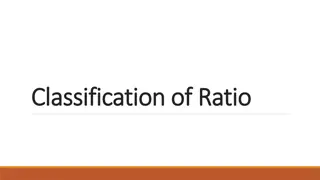Measuring the e/m Ratio Experiment: Understanding Electrons' Behavior in Magnetic Fields
In 1897, JJ Thomson proved electrons were small negatively charged particles through cathode ray experiments. Today, you will replicate a similar experiment to determine the charge-mass ratio of an electron. With the provided apparatus, understand the force on electrons in a magnetic field and observe their circular motion. Dive into the physics principles behind electron behavior and convince yourself of the circular motion in the animation provided.
Download Presentation

Please find below an Image/Link to download the presentation.
The content on the website is provided AS IS for your information and personal use only. It may not be sold, licensed, or shared on other websites without obtaining consent from the author. Download presentation by click this link. If you encounter any issues during the download, it is possible that the publisher has removed the file from their server.
E N D
Presentation Transcript
Motivation In 1897 JJ Thomson set out to prove that cathode rays originating from a heated cathode (electron gun), were actually a stream of small negatively charged particles called electrons From Maxwell's theory on electromagnetism he knew that charged particles could be deflected in electric and magnetic fields. By deflecting electrons in electric and magnetic fields, Thomson was able to successfully determine the charge-mass ratio of an electron and provided the first evidence that atoms were in fact not fundamental building blocks of matter Today you will carry out a very similar experiment and find e/m for yourselves!
Apparatus In the box you will find: 2 Helmholtz's coils A Spherical shaped glass container containing low pressure Hydrogen and distance measuring apparatus An electron gun (cathode) aiming into the container Power supply's for both the electron gun and Helmholtz coils A sheet with the relevant circuit diagram
Physics Principles First, the electrons are accelerated in a fine beam tube across a potential V. Next, they enter a uniform magnetic field produced by the Helmholtz coils and experience a force due to the field Question: What is the force on an electron in a magnetic field? What path will the electrons follow in the field?
Answer For electrons charge e, moving at speed v in a magnetic field B, the force due to the magnetic field is: ??= ??? Using Fleming's left-hand rule, remember that the force is always perpendicular to both the magnetic field and velocity Therefore the particles will move in a circle Convince yourselves this is true
Animation An Animation of the motion can be found here: https://sites.google.com/site/physicsflash/ciclotronE.swf?attredirects=0
Remember the electron is negatively charged so it would move in a clockwise direction
The Hydrogen Interaction Turn on the apparatus, play around the voltages and verify that you can see the electrons . Question: The blue-purple tinge that you see isn t the actual electrons, rather it is the product of an interaction between the electrons and the Hydrogen atoms. What is this interaction and how does it lead to the light we see?
Answer The light we see is the light given off via the de-excitation of the electrons orbiting the Hydrogen atoms The orbital electrons were excited by collisions with the cathode ray electrons An animation of this effect can be found below. Note that in the animation photons strike the orbital electrons instead of the accelerated electrons but the effect is the same http://www.upscale.utoronto.ca/PVB/Harrison/BohrModel/Flash/BohrModel.ht ml
Circular Motion Since the electrons are moving in a circle, there must be a centripetal force Question: Which force is acting as the centripetal force? Answer: The magnetic force! Therefore, since ??= ??, we can equate the equations and solve for e/m Task: Try to derive an expression for e/m before going to the next slide
Solution ?? =??2 ? ??= ???
Cancel vs ?? =?? ? ?? ?=? ? ?= Divide by m Divide by B Question: Which variable is hard to measure? ? ? ??
Answer Velocity However, we get around this using the electron gun equation: ?? =1 2??2 Task: Sub the equation on the previous slide into the one above to obtain an expression for e/m in terms of Voltage, magnetic field and radius.
Answer Rearrange electron gun equation ?2=2?? ? ? ? Rearrange e/m equation ? = ?? Square the e/m equation ?2= (??)2(? ?)2 Equate both equations (??)2(? ?)2=2?? ? (??)2? Cancel ?? ?= 2? ? ?= 2? Divide by (??)2 (??)2
Almost There ? ?= 2? (??)2 Now we have three variables which we can easily obtain: The voltage ? is available from the power supply The magnetic field is generated by the Helmholtz coils and is portioned to the applied current: ? = ?? The k value for this apparatus is (0.741 0.007 mT/A) The radius can be measured using the rulers attached to the glass sphere
Procedure Turn all dials to zero and switch on the power Set the beam potential to V = 120V Question: What does the beam look like? Can you explain it? Now crank the voltage up to V= 250V (Don t go higher than this!) Question: What does the beam look like now compared to the 120V case? Can you explain why it is different? Adjust the 50V display to give a narrow, well defined electron beam Adjust the Helmholtz coils power supply and look for the current I at which the electron beam is deflected into a closed orbit
Use the sliders and mirrors to measure the diameter of orbit Move the left slide so that its inner edge, mirror image and escape aperture lie on the same line of sight Move the right slide so that its inner edge, mirror image and the right hand side of the circular electron beam all lie on the same line of sight Question: Why are mirrors and sliders used?
Answer To eliminate parallax error
Final Result Measure the diameter (Don t forget uncertainties!) and remember to halve your result to get the radius Write down all required quantities and use our derived formula to calculate ?? ? ?= (???)2 2? k = 0.741 0.007 mT/A
Conclusion Does your value for e/m agree with the accepted value? ? ?= ?.?? ????C/kg If not, what do you think went wrong? Where was the largest source of error? Could you improve the experiment in any way?


